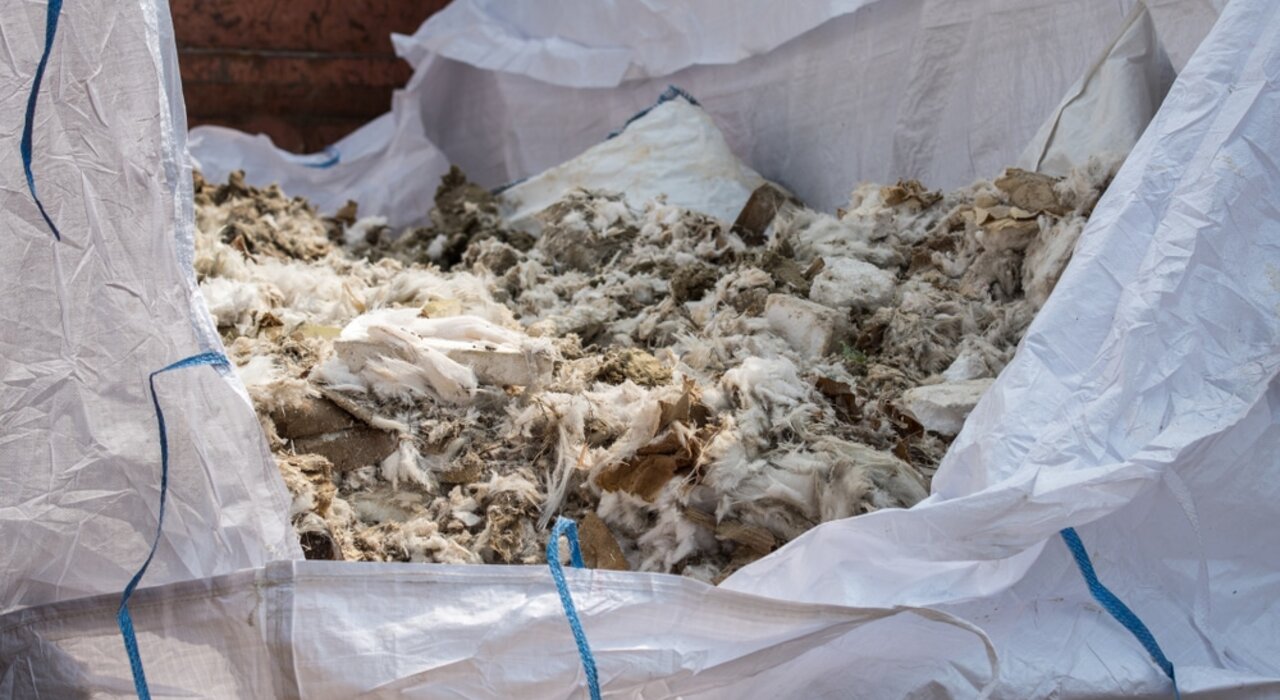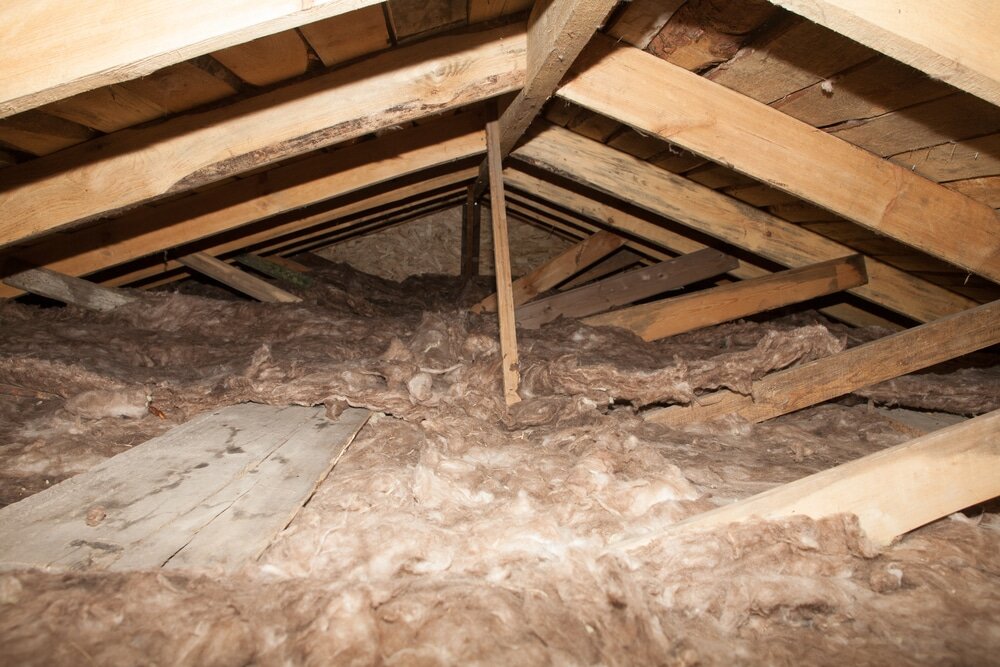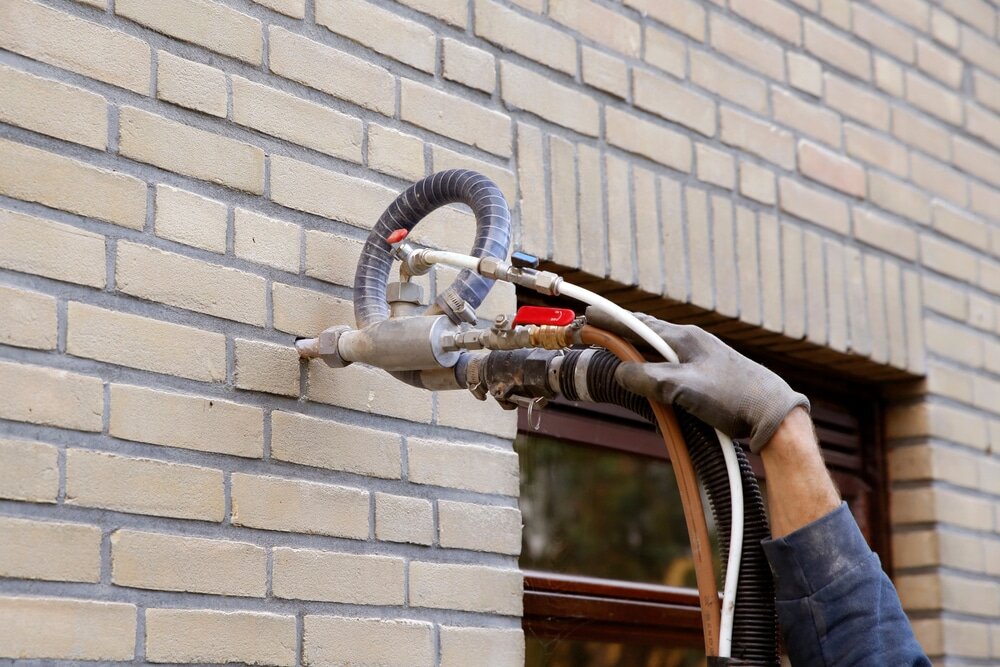
- Loft insulation
- Why loft insulation degrades
- Types of loft insulation
- Assessing and replacing loft insulation
- Floor insulation
- The importance of floor insulation
- Types of floor insulation
- Assessing and replacing floor insulation
- Cavity wall insulation
- Role of cavity wall insulation
- Types of cavity wall insulation
- Potential issues
- Assessing and replacing cavity wall insulation
- External wall insulation
- Benefits of EWI
- Types of EWI materials
When it comes to maintaining a comfortable and energy-efficient home, insulation plays a pivotal role. However, over time, existing insulation in various parts of the house can become less effective or even potentially harmful. In this blog, we’ll explore whether you should remove old insulation and consider the implications for different types of insulation, such as loft insulation, floor insulation, External Wall Insulation (EWI), and cavity wall insulation.
Loft insulation
When delving deeper into the subject of loft insulation, it's essential to understand both its importance and the specifics that determine whether it needs replacing or upgrading. Loft insulation is a critical factor in maintaining a home's temperature, preventing heat from escaping during the winter and keeping the house cooler in the summer.
Why loft insulation degrades
Several factors contribute to the degradation of loft insulation:
- Material Ageing: Materials like fibreglass, mineral wool, or cellulose can compress and settle over time. This reduces their thickness and, consequently, their insulating efficiency.
- Moisture Damage: Roofs can develop leaks, and moisture can seep into the loft insulation. When insulation gets wet, it clumps together, losing its air pockets that provide the insulating effect.
- Pest Infestation: Lofts can be prone to infestations by rodents or insects. These pests can nest in the insulation, damaging it and potentially creating health hazards.
- Mould and Mildew: Poor ventilation in the loft can lead to the growth of mould and mildew in the insulation, reducing its effectiveness and potentially causing health issues.
Types of loft insulation
Several types of insulation materials can be used in lofts:
- Fibreglass Batts: These are commonly used due to their affordability. However, they can be less effective if not properly installed and can settle over time.
- Mineral Wool: It's denser than fibreglass and has better sound insulation properties. It's also more resistant to fire and moisture.
- Cellulose: Made from recycled paper, cellulose is an eco-friendly option. It's treated with fire retardants and can be blown into spaces, making it suitable for lofts with irregular joist spacing.
- Spray Foam: This is an effective insulator and can also help seal air leaks. However, it's more expensive and requires professional installation.

Assessing and replacing loft insulation
When evaluating the state of your loft insulation, several key factors need consideration. Firstly, assess the thickness; for materials like mineral wool, the recommended thickness is around 270mm. Then, examine the condition of the insulation, keeping an eye out for dampness, signs of pests, or mould growth, as these can significantly compromise its efficiency. Another indicator to be mindful of is a rise in your energy bills, which could signal a decline in the insulation's effectiveness. If you determine that replacement is necessary, it's generally advisable to completely remove the old insulation before installing new material. This is particularly true if you've identified issues like moisture damage or contamination. Due to the intricate nature of both assessing and replacing loft insulation, seeking professional assistance is highly recommended. A skilled expert can not only conduct a thorough evaluation but also ensure that the new insulation is installed correctly, thus maximising its efficiency and adhering to the latest building regulations.
Floor insulation
Floor insulation is an often overlooked yet crucial aspect of a home's overall thermal efficiency. It plays a significant role in minimising heat loss, especially in older houses where floor insulation may be absent or inadequate.
The importance of floor insulation
- Heat Loss Prevention: A substantial amount of heat can be lost through uninsulated floors, particularly in homes with suspended timber floors.
- Comfort: Insulating floors can significantly enhance the comfort of a home by keeping the surface warmer underfoot during colder months.
- Energy Efficiency: Proper floor insulation contributes to reduced energy consumption, as it helps maintain a consistent temperature, reducing the need for excessive heating.
Types of floor insulation
The choice of insulation depends on the type of floor construction:
- Suspended Timber Floors: Often found in older homes, these can be insulated by fitting insulation materials between the floor joists. Options include mineral wool, natural wool, or rigid insulation boards.
- Solid Floors: These are typically insulated when they are laid or replaced. Rigid insulation boards are often used, laid on top of the existing concrete, followed by a new floor finish.
- Underfloor Heating Systems: For homes with underfloor heating, specific insulation boards designed to work efficiently with these systems are used to prevent heat from being lost downwards.
Assessing and replacing floor insulation
When considering the installation or replacement of floor insulation, several critical aspects must be evaluated. Firstly, examine the condition of any existing insulation, particularly in suspended timber floors, for signs of dampness, rot, or pest infestation, which can compromise insulation effectiveness. The challenge of accessing underfloor spaces, a common issue in older homes, necessitates careful consideration and often requires a professional assessment to determine the most feasible approach. Additionally, it's crucial to ensure that the selected insulation material is compatible with other systems in your home, such as underfloor heating, and that it does not obstruct essential ventilation. Due to the potential complexities involved, especially in older homes or those with unique architectural characteristics, seeking the expertise of insulation professionals is highly advisable. They can conduct a thorough assessment of your current floor structure and any existing insulation, recommend the most suitable type of insulation for your specific circumstances, and carry out a professional installation. This expert approach guarantees maximum efficiency and minimises disruption.
Cavity wall insulation
Cavity wall insulation is a key component in the thermal efficiency of many modern homes. In houses with cavity walls, the gap between the inner and outer layers can be a significant source of heat loss if not properly insulated.Role of cavity wall insulation
- Heat Retention: Cavity wall insulation fills the gap between the inner and outer walls, reducing heat loss and helping maintain a consistent indoor temperature.
- Energy Efficiency: By reducing heat loss, this insulation can lead to lower heating bills and improved energy efficiency in the home.
- Preventing Damp: Properly installed cavity wall insulation can also help prevent dampness by reducing condensation within the cavity.
Types of cavity wall insulation
There are several materials commonly used for cavity wall insulation:
- Mineral Wool: Fibre materials that are blown into the cavity, providing good thermal and acoustic insulation.
- Polystyrene Beads: Small beads combined with a binding agent that is injected into the cavity, offering high thermal efficiency.
- Urea-Formaldehyde Foam: Less commonly used now due to environmental concerns, but still found in some older properties.

Potential issues
While beneficial, cavity wall insulation can sometimes lead to problems:
- Dampness: If improperly installed or if the external walls are not adequately waterproof, moisture can penetrate and lead to damp issues.
- Degradation Over Time: Some materials, like urea-formaldehyde foam, can degrade over time, losing their insulating properties.
- Ventilation Issues: Inadequate ventilation can lead to a build-up of condensation, which might result in dampness and mould growth.
Assessing and replacing cavity wall insulation
When it comes to assessing and potentially replacing cavity wall insulation, several key aspects need to be thoroughly considered. Firstly, inspect the current state of the insulation for any signs of dampness or degradation. Next, evaluate the suitability of the existing insulation material in terms of its compatibility with your home and its adherence to contemporary environmental and safety standards. An expert energy efficiency assessment is crucial to determine the actual performance of the insulation and its effectiveness in contributing to your home’s energy efficiency. Given the intricacies involved with cavity wall insulation, such as the necessity for specialised equipment for injection and the critical importance of ensuring adequate ventilation and damp-proofing, seeking professional advice and installation services is highly recommended. Specialists in this field can provide a comprehensive evaluation of your existing insulation, and advise on the most appropriate insulation type for your property considering factors like the structure of your walls, local climate conditions, and specific energy efficiency objectives. Furthermore, they can guarantee that the installation is executed correctly. This maximises the benefits of the insulation while mitigating risks such as dampness or insufficient ventilation. This professional approach ensures that your cavity wall insulation is not only effective but also aligns with the overall health and efficiency of your home.
External wall insulation
External Wall Insulation (EWI) is a significant aspect of home insulation, particularly for properties that cannot accommodate cavity wall insulation. EWI involves applying insulation material to the exterior walls of a building, followed by a protective render or cladding. This method not only enhances the thermal efficiency of a home but also rejuvenates its external appearance.
Benefits of EWI
- Improved Thermal Efficiency: EWI significantly reduces heat loss through walls, helping maintain a consistent indoor temperature and reducing heating costs.
- Enhanced Building Appearance: With a range of finishes available, EWI can dramatically improve the exterior look of a property.
- Reduced Condensation: By keeping the wall warmer, EWI reduces the likelihood of condensation and dampness on internal walls.
- Noise Reduction: The insulation layer can also provide soundproofing benefits, reducing external noise.
Types of EWI materials
EWI systems typically involve the following materials:
- Expanded Polystyrene (EPS): A lightweight and cost-effective option offering good thermal insulation.
- Mineral Wool: Provides excellent thermal and acoustic insulation, and is highly fire-resistant.
- Phenolic Foam: Offers superior thermal performance but is more expensive.
- Wood Fibre: An eco-friendly option providing good thermal insulation and breathability.
When considering the installation of EWI, several critical factors must be taken into account to ensure its success and effectiveness. Initially, a professional assessment is indispensable for determining the suitability of EWI for your specific property. This assessment involves ensuring that the EWI conforms to local building codes and regulations. These cover essential aspects like fire safety and thermal performance standards. Additionally, the aesthetic impact of EWI should not be overlooked, particularly for properties situated in conservation areas. It's also vital to understand the longevity and maintenance requirements of the chosen EWI system. These factors significantly influence the long-term sustainability and cost-effectiveness of the installation. In cases where EWI is already installed, a condition assessment is necessary to identify any signs of wear, damage, or underperformance. These may indicate the need for replacement. Upgrading older EWI systems is often beneficial. Newer materials and technologies might offer improved energy efficiency and better overall performance. Additionally, considering advancements in materials is crucial, as modern EWI solutions offer enhanced insulation properties and greater durability. This ensures a more robust and long-lasting installation. Overall, careful planning, consideration of various factors, and professional guidance are key to the successful implementation and maintenance of EWI on any property.
